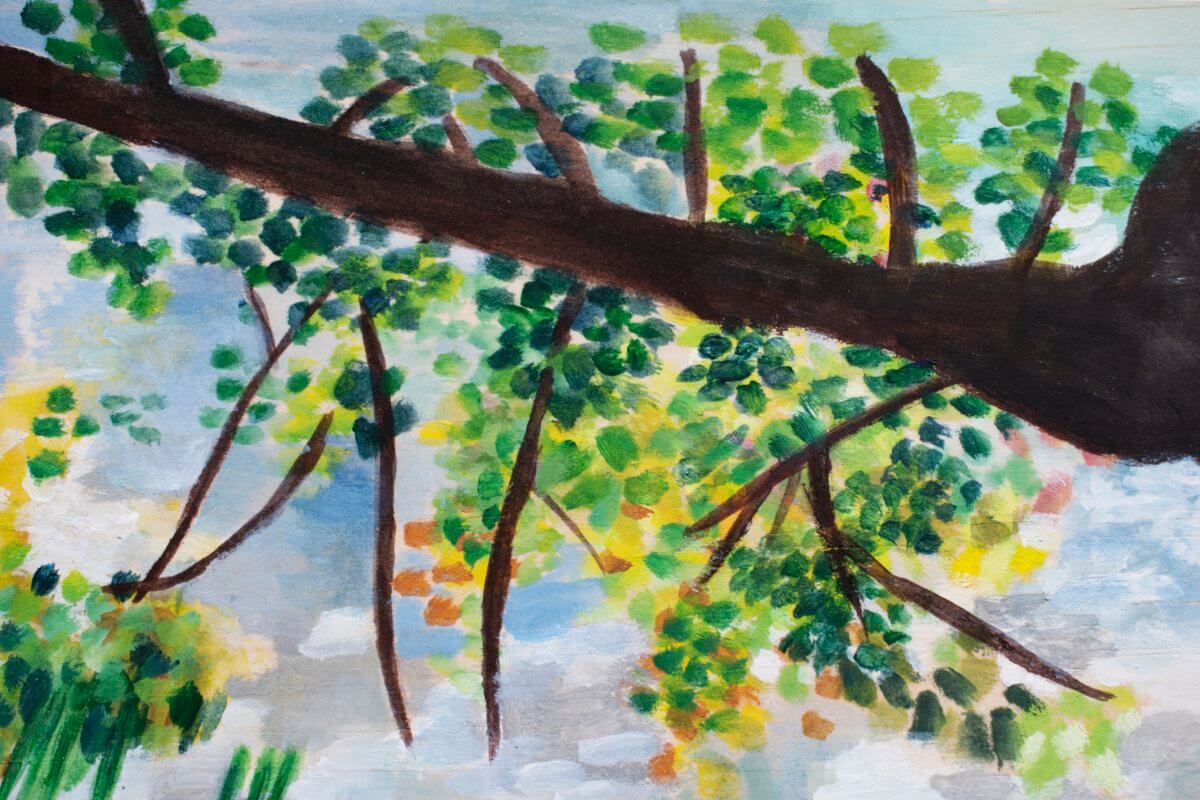Claude Monet is arguably the most influential Impressionist painter of all time. The National Gallery of Australia exhibition Monet: Impression, Sunrise certainly indicates this! The exhibition displays Monet’s works alongside those of several other Impressionist painters who have followed in the French artist’s footsteps. If only one thing is clear from the popularity of this exhibition, it is that the impact of Impressionism on art past and present will likely never die.
When I was lucky enough to attend this exhibition recently, I was amazed by the unique technicality of Impressionism. From leaves on trees to reflections in water, the attention to detail is remarkable. Monet and his protégés left nothing to the imagination. Every brush stroke, every shade of colour, every bit of texture is right there before our eyes. It is almost hard to believe that these paintings are, in fact, paintings at all; the artists represent each scene so literally that they almost appear like photographs. Perhaps it’s not even a stretch to imagine that the invention of photography as we know it today was influenced by Impressionism!
At times, I made the mistake of looking too closely at the paintings. In some ways, this ruined the artistic impact for me: it was almost like discovering how a magician performs their trick without experiencing the awe of the trick beforehand. On the other hand, however, standing close enough to a painting to see how the painter achieved the effects of the artwork provided me with a new insight into the creative process. I was able to observe how the literality of the paintings were created, and appreciate the time and effort that this must have required. One painting in particular stood out to me in this way: Monet’s Les Tuileries, a landscape artwork which represents a 16th century Parisian garden. When I looked close enough at this painting, I was able to experience the bird’s-eye-view that Monet was presumably trying to achieve.
This is what I think was the true impact of this exhibition: perspective. In seeing each painting up-close, one can empathise with the artist’s technical and creative vision. In displaying Monet’s artwork in addition to artwork that followed, one can imagine how the Impressionist movement began and evolved over time. In placing Monet at the centre of the exhibition, one can easily believe that he was the man who started it all.
Close to a century after his death, Monet continues to make an impression on the ever-evolving artistic landscape. The fact that an exhibition like this has been created and transported around the world demonstrates that since the publication of his works, art and culture have never been the same. I know that the next time I observe and analyse a work of art, I will not be able to help but compare it to what I saw in Monet: Impression, Sunrise. Therein lies the power of timeless art.
Monet: Impression, Sunrise is at the National Gallery of Australia until September 1.
We acknowledge the Ngunnawal and Ngambri people, who are the Traditional Custodians of the land on which Woroni, Woroni Radio and Woroni TV are created, edited, published, printed and distributed. We pay our respects to Elders past and present. We acknowledge that the name Woroni was taken from the Wadi Wadi Nation without permission, and we are striving to do better for future reconciliation.
